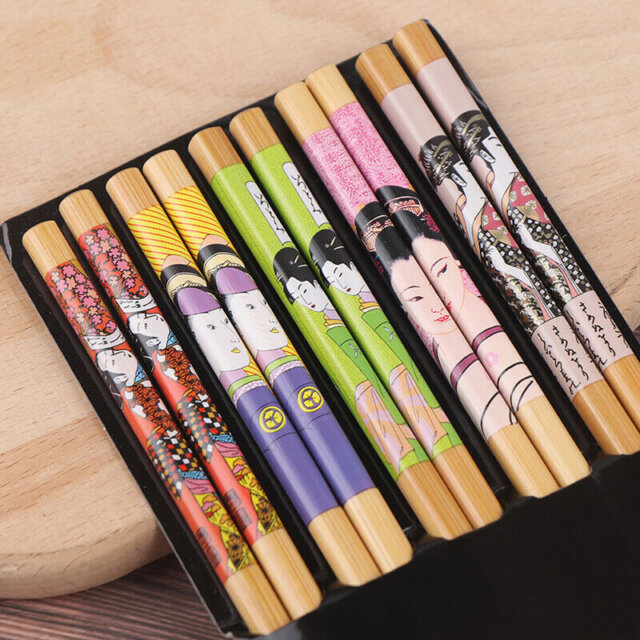Subtotal: $3.80
The Untold Story of Japanese Ramen Noodles
Japanese ramen noodles are a type of wheat noodle soup that is classified according to their soup base. Originating in China ramen has grown to be one of Japan’s most popular noodle dishes.
In Japan, nearly every busy corner is home to a ramen restaurant (ramen-ya). With over 32,000 restaurants located throughout the country, each region will feature a variety of specialities that reflects seasonal and local ingredients, environment, and cuisine.
Ramen noodles became popular throughout Japan following the opening of the port for trading at the end of the Meiji era (1868–1922), and today ramen consists of a combination of noodles, dashi, tare, and a variety of oil-based soup bases, with ingredients such as Shoyu ramen (soy sauce), miso ramen, Shio ramen (salty), Tonkotsu ramen (pork bone), Wakayama ramen (pork bone and soya sauce) and dipping ramen.
Table of Contents
Where Did Ramen Originate From?
Although ramen has found a fruitful footing in the Land of the Rising Sun, where it is a frequently eaten dish on a daily basis, the Chinese claim credit for its conception. According to reports, the Ming dynasty scholar Shu Shunsui, who arrived in Japan as a refugee in the 17th century and immediately became an adviser to feudal lord Tokugawa Mitsukuni, is credited for establishing the ramen tradition.
Given that the house lord was accustomed to beginning meals with a basic udon soup, Shunsui advised he enliven it with a variety of items, ranging from vegetables to pork, in order to create a single balanced dish. Unfortunately, no documented documentation of the recipe has been passed down, and the delicate border between truth and folklore makes verifying the notion impossible.
Rather than that, the most probable explanation is that when Japan’s port cities opened to international commerce in the mid-19th century, the country found Laa-Mein, a Chinese noodle soup remarkably similar to ramen but lacking the topping. In Japan, the first person to consume Ramen in Japan was Mito Mitsukuni dated 1697.
Ramen Noodle Types
Ramen is a type of noodle that is slightly different from other types of noodles. Served in a large ramen noodle bowl, noodles ramen are combined with Kansui (alkalinized water). Kansui imparts a softer texture to wheat noodles. Only last year, an old Japanese book revealed that noodles made with Kansui and wheat called Keitai-men were offered in 1488, arguably the first ramen-style noodle eaten in Japan. When ramen first arrived in Japan, it was not well received by the people. The Japanese thought the soup was a tad bit too greasy.
- Tsukemen Ramen: These robust ramen noodles are boiled, drained, and served alongside a bowl of tare ramen broth. You dip the noodles in the soup and let the viscous liquid cover each strand in delectable wetness. Tsukemen soup comes in a variety of tastes, from shellfish to salty pig broth.
- Ramen Miso: Miso ramen originates in Hokkaido’s Sapporo area and is named after its primary ingredient. This soup is intensely flavorful and delicious, with an opaque appearance. There are several variations of miso paste as well, including white miso, red miso, barley miso, and soybean miso.
- Shoyu Ramen: Shoyu is the Japanese word for soy sauce, and this form of noodle dish was really the earliest variety of ramen, and it is still popular today. There are several variations of shoyu ramen, but the flavour is often salty and sour.
- Shio Ramen: Shio is a Japanese word for salt, and this form of ramen is often light and translucent. It is frequently prepared by boiling chicken bones and seasoned with marine ingredients like dried sardines, dashi stock, and bonito flakes.
- Ramen Tonkotsu: Tonkotsu ramen, which originates in modern-day Fukuoka and lends its delectable smell to Tokyo’s Asakusa district, is cooked by boiling pig bones for hours until they produce a creamy hazy appearance in the tonkotsu broth.
Throughout its growth in Japan, ramen diverged significantly from its Chinese equivalent in order to appeal to the Japanese palate. Chashu pork, bamboo shoots, nori, and eggs were substituted as toppings. Additionally, the soup flavours varied significantly to include a soy sauce flavour that was not as fatty as the Chinese soups.
Ramen Bowl Toppings
It’s the toppings that actually give ramen noodles their unique flavour: broth, spice, noodles, and garnish. Toppings are like paint on a canvas for ramen noodles. Even if you just eat the noodles, here is the place to go if you want to make a bowl that reflects your personality, the weather, or the time of day.
- Niku Soboro: Niku soboro is fried ground chicken, beef, or pork that has been seasoned. Soy sauce and sugar are used to season the ground beef.
Chashu: A thinly sliced piece of fatty pork belly or loin cooked in soy sauce and mirin (rice wine) until soft; a common accompaniment to many ramen noodle bowls. - Scallions: An all-time favourite garnish, scallions offer just the right amount of crunch and taste. However, avoid going overboard—you do not want a mouthful of scallions with every meal.
- Pickled Ginger: While raw ginger is a touch too pungent for ramen noodles, pickled ginger provides an excellent counterpoint to the spiciness in your ramen flavour.
- Hard-boiled Eggs: Hard boil the eggs, then marinade them in soy sauce and cut them in half. The ramen egg is recognised and beloved for its firm, seasoned egg whites and soft, luscious egg yolk.
- Kamaboko: Kamaboko is a form of cured surimi, a type of processed shellfish that is popular in Japanese cuisine.
Produced by shaping several pureed deboned white fish loaves with natural or artificial additions and flavourings into unique loaves and steaming until fully cooked and solid. - Shiitake Mushrooms: Enhance shiitake mushrooms to ramen soup to add umami taste. Dried shiitake mushrooms can also be used as part of a dashi soup base. This earthy ingredient balances out the tastes in your creation.
- Bok Choy: This green vegetable softens beautifully when added to hot ramen soup, and provides a great contrast to the flavours and meats in your bowl.
- Dried Seaweed: Dried seaweed may be sliced or crushed and sprinkled on top of any noodle meal to create a pleasing crunch.
- Menma: Menma is the Japanese term for fermented bamboo shoots. They are sweet and somewhat nutty in flavour and are frequently used in ramen noodle soups.
- Tofu: Often neglected as a ramen topping, tofu earns a gold star on our list. There are an infinite number of tofu recipes available for you to experiment with.
PostWar Ramen & Instant Noodles
Following the war, ramen was widely consumed due to its low cost of production and nutritional content. Ramen was a popular street snack until the 1950s when mobile carts served the cuisine.
Nisshin Chicken Ramen was the world’s first instant noodle, introduced in 1953 and quickly spread over the world. Numerous restaurants began offering a range of soups, including shellfish and miso. As a result, nearly every prefecture in Japan has its own distinct kind of ramen. Today, ramen is only available as quick food and is never offered in upscale restaurants.






